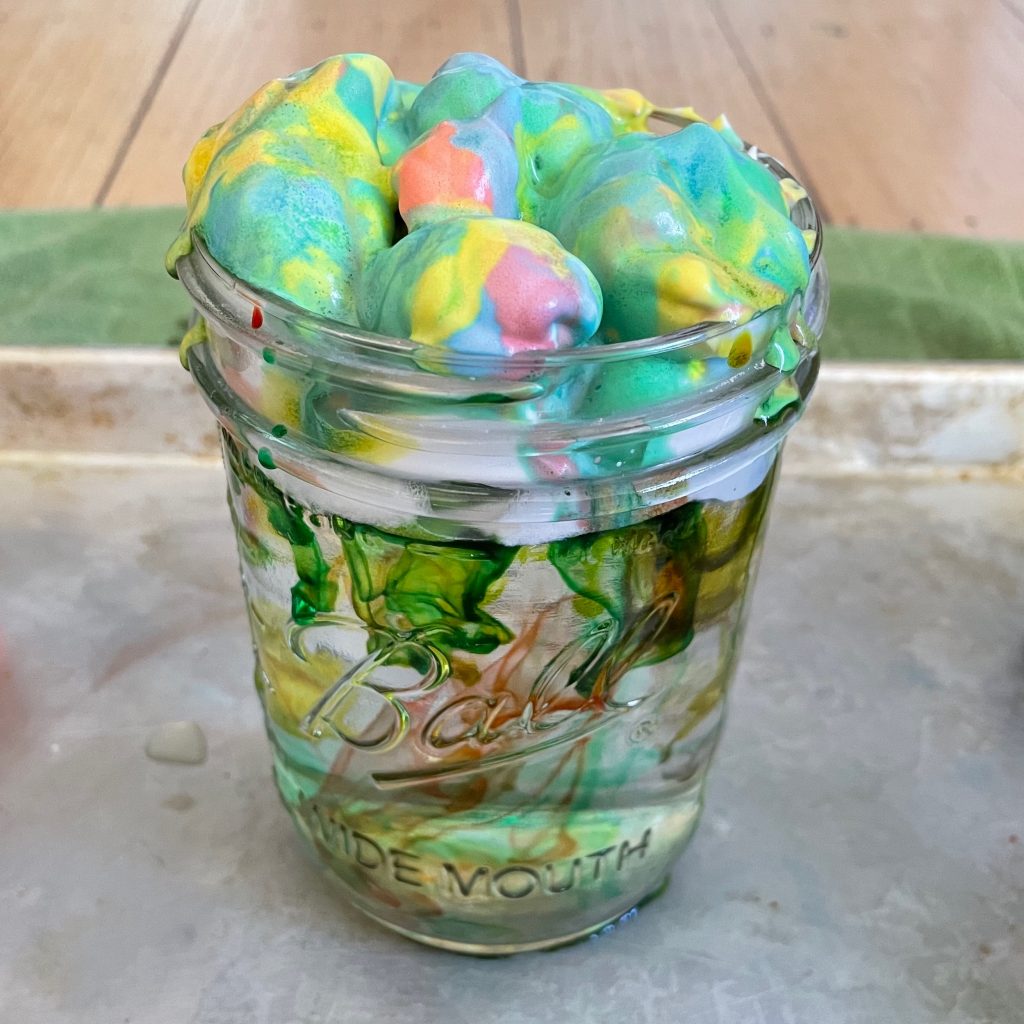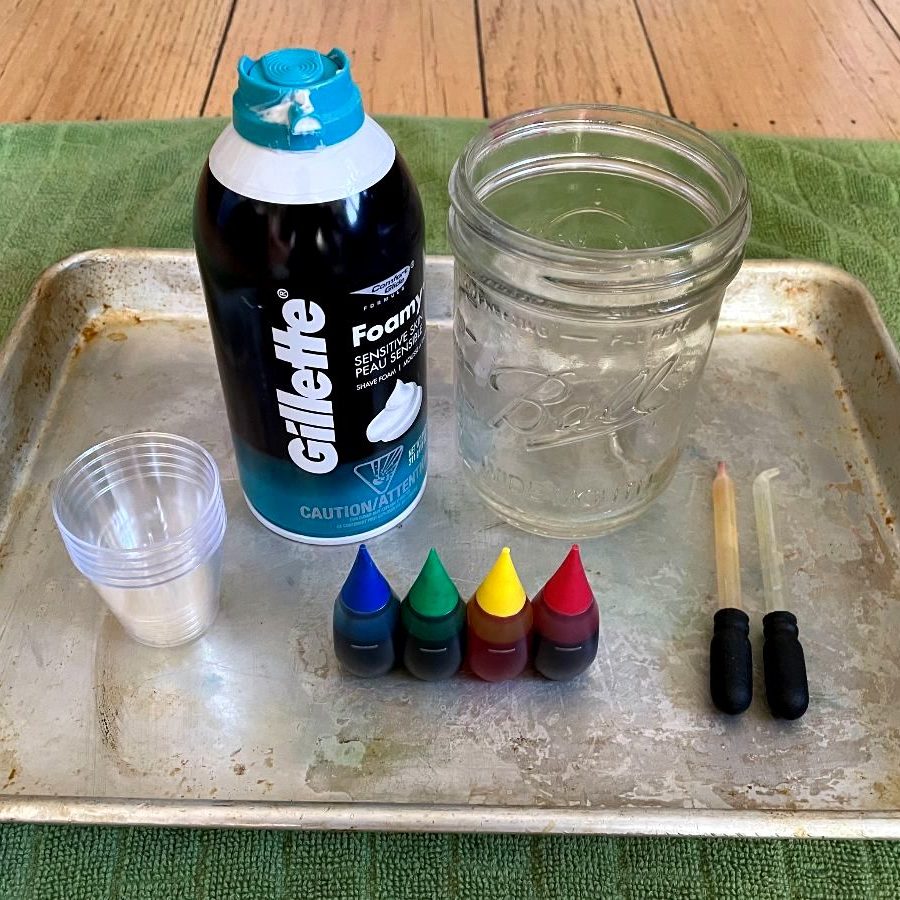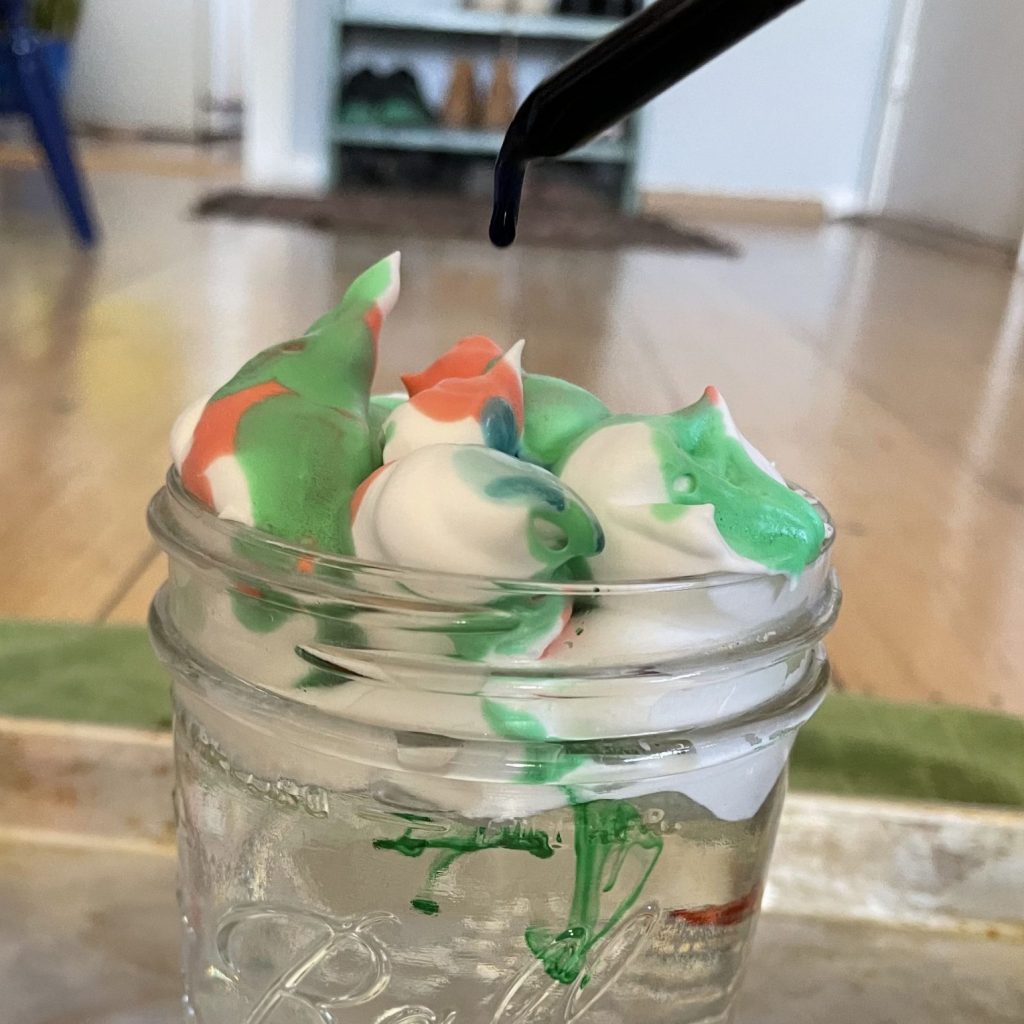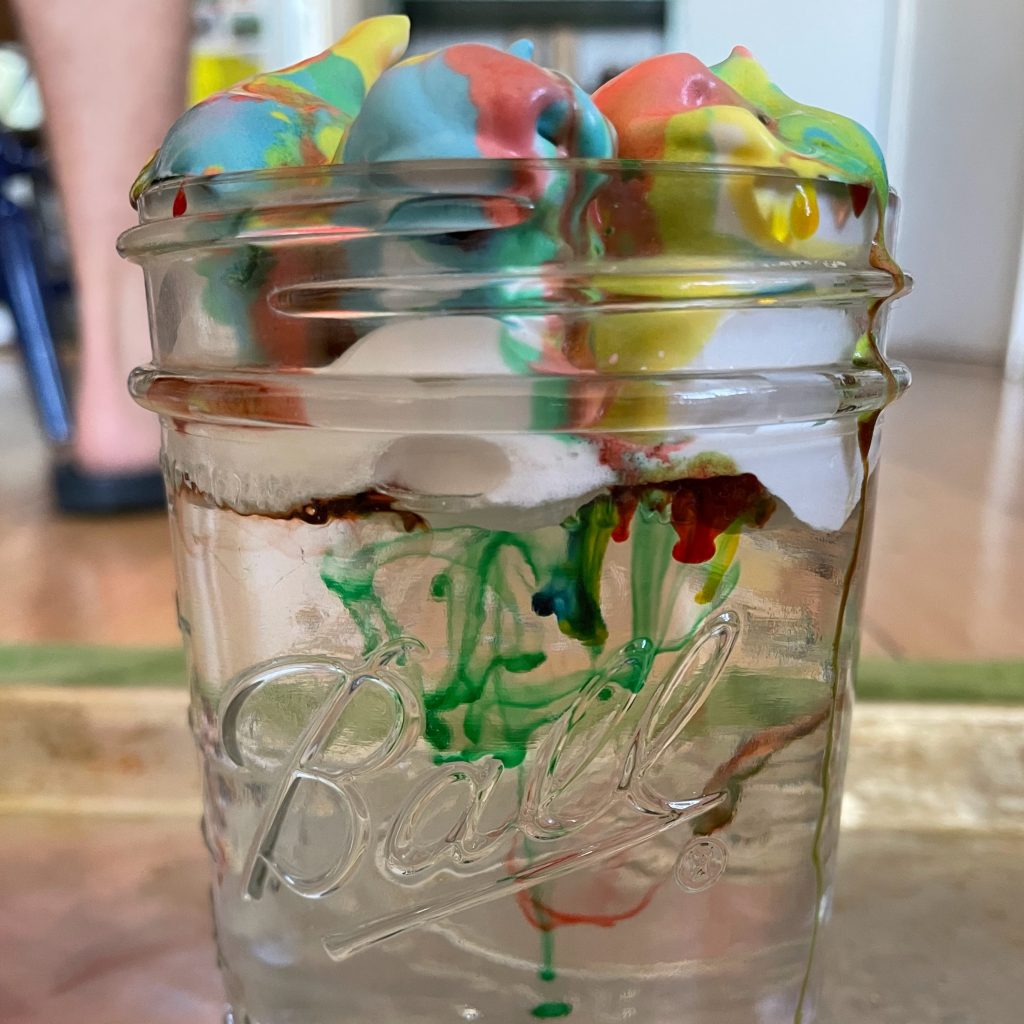Disclaimer: This page contains Amazon affiliate links. If you make a purchase from one of the links, Habitot will earn a small commission at no extra cost to you.

Winter and spring months present a great opportunity for children to explore and observe changing weather patterns. This colorful activity demonstrates the basics of how rain and rain clouds work using shaving cream, water, and food coloring.
What We’re Learning & Skills We’re Building
- Fine motor skills – using the small muscles in the hands to squeeze pipettes
- Weather – learning about how rain and rain clouds form
- Buoyancy – shaving cream is so lightweight that it floats on top of water (positive buoyancy)
- Measurement – adding a specific amount amount of water to a jar or a drinking glass
(Safety note: Please supervise children if they’re using a glass container. Also, toddlers and babies might try to eat the shaving cream: here’s a recipe for taste-safe foam made from chickpeas.)
Materials
- 8 oz plastic Mason Jar (or 8 oz clear drinking glass)
- Shaving cream (“sensitive skin” or “unscented” recommended)
- Food coloring diluted in small bowls/cups of water (or liquid watercolor paints)
- Pipettes
- Art tray to work on
Optional Materials
- Spouted liquid measuring cup
- Spoons for mixing
- Paintbrushes and cardstock (for spreading shaving cream)

Set Up
- Fill a Mason jar or a clear drinking glass almost completely with water, stopping about a half-inch from the rim. (Fill it up in the sink, or use a spouted, liquid measuring cup so your child can practice measuring.)
- Squirt a large dollop of shaving cream on top of the water in the jar – it should look like a cloud! The activity works best if the shaving cream is pillowy and at least 1-2 inches thick on top of the water.
- Dilute the food coloring in small bowls/cups of water.

Explore & Play
- Experiment: Use the pipettes to suck up the food coloring and squeeze it over the top of the shaving cream “cloud.” (The activity won’t work as well if the pipettes are inserted directly into the shaving cream, but encourage your child to experiment by letting them explore the materials with limited adult direction.)
- Observe: Continue squeezing the colors over the shaving cream until they begin to fall through the “cloud” and seep into the water (this can take several minutes depending on how thick the shaving cream is).
- Question: Encourage your child to notice how the colors trickle out of the bottom of the “cloud” and spread out into the water, much like rain! Ask, “Can you describe what you see happening inside the jar? Is the colorful “rain” moving slowly through the water or is it moving quickly? Which materials stay at the top of the jar? Which materials sink to the bottom?”
- Expand: Introduce spoons for mixing the water and scooping the shaving cream. Try painting with the now colorful shaving cream on a piece of cardstock. Turn this into a sensory activity by scooping the shaving cream onto the art tray so your child can explore it with their hands. (Note: food coloring might temporarily stain hands and permanently stain fabric.)
- Play: Rinse out the jar and repeat the steps!
STEM Learning
This activity is a very simple example of how rain clouds work. The shaving cream represents a cloud, the food coloring represents rain, and the water in the jar represents the air/sky. The shaving cream is full of air making it so lightweight that it’s able to float on top of the water. When the food coloring is dripped over the top of the shaving cream, the “cloud” becomes saturated, or heavy with liquid as it fills up with food coloring. Eventually, the shaving cream “cloud” becomes so saturated that the food coloring seeps into the water below, much like rain. The actual science behind rain clouds is a bit more complex. Elementary school-age and older children can check out this video of how rain forms to learn more!


